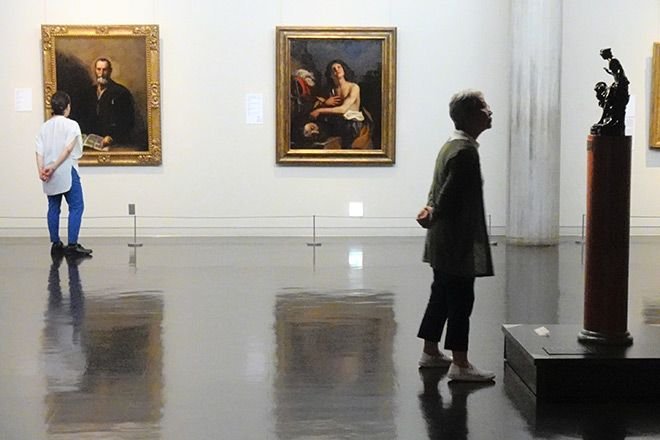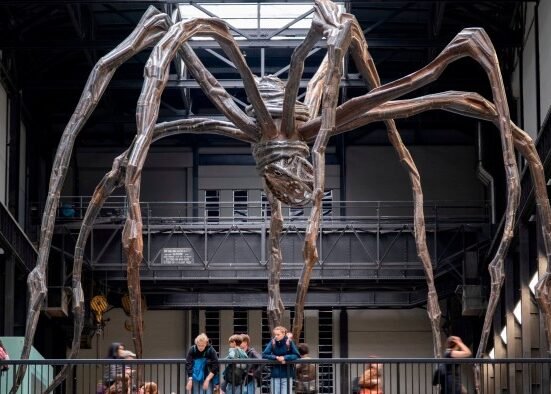Visiting a museum or art gallery may help people feel calmer and happier, according to researchers who are investigating the phenomenon they call “museum bathing.”
In June, a team led by Izumi Ogata, a specially appointed professor of museology at Kyushu Sangyo University, conducted an experiment at the National Museum of Western Art in Tokyo’s Ueno district.
In the study, 41 people, 23 of whom were 65 years or older and 18 of whom were in their 20s, visited the museum. Changes in their blood pressure and psychological state, among other aspects, were examined.
First, the test subjects viewed the exhibited works in silence for 20 minutes and next they viewed the exhibits for 20 minutes while conversing with others.
Blood pressure, pulse rate, mood and emotional state were measured three times—before the viewing started, after the first viewing and after the second viewing.
After viewing the exhibited works, both the older and younger test subjects tended to show lower indicators for negative states such as anger, fatigue, tension, confusion and depression.
On the other hand, indicators for liveliness and other positive states rose after the second viewing.
“I was surprised to see a visible reduction in negative emotions,” said Kana Anzai, a senior student at Toyo University who majors in tourism studies, who participated in the experiment.
The research team began the experiment in September 2020. So far, more than 1,000 test subjects and 75 museums have participated.
The experiment has been conducted in different types of museums, such as history, archaeology, folklore and fine arts, for different lengths of time.
The results have consistently shown an effect on relaxation, according to the researchers.
“Museum bathing has an effect on the function of activating human homeostasis,” Ogata said.
In 2019, a group of researchers from the University of London reported that a survey of about 6,000 people showed that residents of communities with high exposure to cultural arts had significantly lower mortality rates than those who had no exposure at all.
In the same year, the World Health Organization compiled a report that concluded that the arts contribute to health throughout life. The conclusion was based on more than 3,000 studies conducted around the world.
According to the education ministry, there are more than 5,700 museums in Japan, but citizens on average only visited one about 1.2 times in fiscal 2018.
“If it can be proven that even a 10- or 20-minute visit to a museum can relieve stress, it may draw in new visitors,” Ogata said.
Masayuki Tanaka, director of the National Museum of Western Art, said that many people feel extra pressure that they “have to understand the paintings” and that presents a hurdle to visiting museums.
“If the health benefits are proven, such thinking of a museum visitor will change, too,” Tanaka said.
Mikito Yamada, deputy director of the Central Japan International Medical Center in Gifu Prefecture, said, “I assume that with the sympathetic nervous system strained by the stresses of daily life, taking the time to view a museum will relax you and stabilize your pulse and blood pressure.”
Yamada added, “However, I cannot say that it is medically effective. I hope that further data will be accumulated.”







